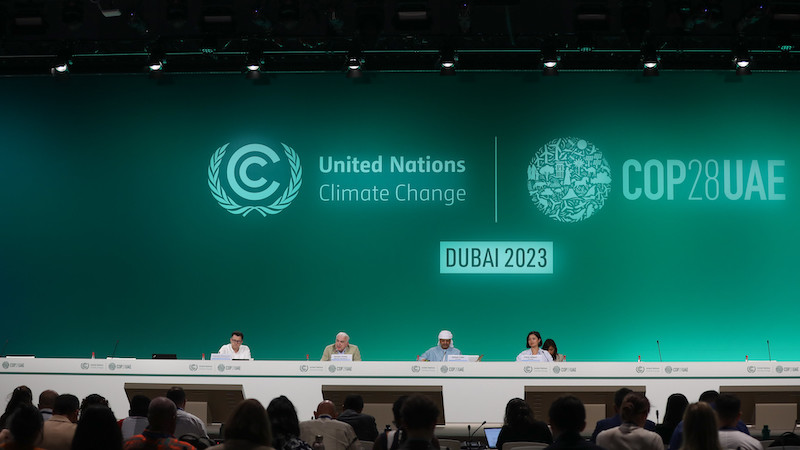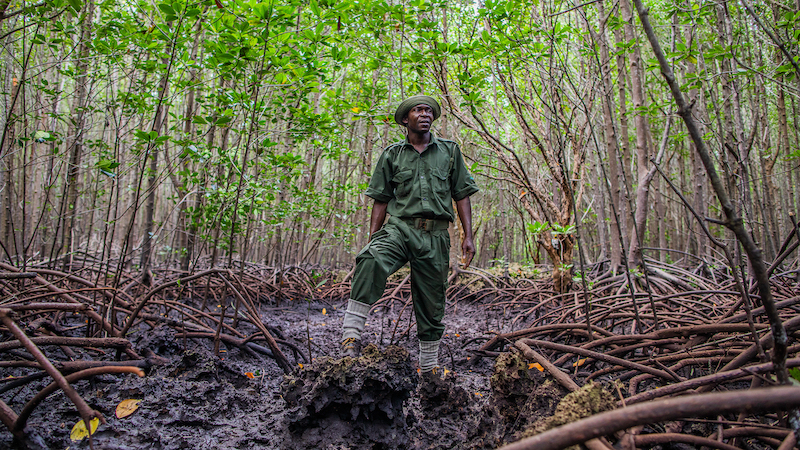As carbon credits face intense scrutiny, negotiators will wrangle over how to ensure the integrity of a new global carbon market
Governments are set to take a decisive step at Cop28 towards making a long-awaited global carbon market governed by the UN a reality.
The Paris Agreement establishes ways for countries to “voluntarily cooperate” to meet their climate targets by allowing emission reductions and removals to be traded.
In Dubai, negotiators will finalise the architecture of a new mechanism allowing countries to sell offsets to other governments, companies and individuals under Article 6.4.
It comes at a pivotal time. The voluntary carbon market has faced more intense scrutiny than ever this year with report after report casting doubt over its integrity. But for many, carbon credits remain a valuable tool to channel much-needed finance to developing countries.
The stakes are high for the new system to get it right and correct problems with existing systems. We outline four critical questions for the outcome from Dubai.
Which activities are eligible?
Deciding which activities can produce credits is an important and fraught question.
If the criteria are too restrictive, countries may struggle to obtain any meaningful financial support from the mechanism. Too broad and projects with questionable climate credentials, or other significant environmental and social concerns, will undermine their credibility.
Over the last year, the UN’s Article 6.4 supervisory body has been evaluating the eligibility of carbon removals: activities that take carbon dioxide out of the atmosphere and store it. These can be nature-based, such as planting trees, or engineering-based, like machines to suck CO2.
Tensions emerged last May when an internal briefing note drafted by the UNFCCC secretariat advised against including technological solutions describing them as “unproven” and potentially risky.
While the supervisory body distanced itself from the document, it angered the industry which responded by flooding the consultation process with submissions putting their case forward.
It worked. The final recommendations, agreed upon after several extended meetings, do not directly encourage or discriminate against any type of activity.
Ministers still need to approve the package in Dubai. While a broad agreement is expected, certain groups may still have issues with it.
Papua New Guinea, representing the Coalition for Rainforest Nations, could be a blocker. It has long argued that credits issued for forest conservation under the Redd+ framework should automatically qualify for the new mechanism.
Most countries and experts disagree. “The intention of the Redd+ framework was never to generate credits”, says Pedro Martins Barata, a carbon markets expert at EDF and a former negotiator. “That mechanism is much less stringent. They should go through the same process of methodology submission and independent evaluation as all the other activities.”
Are the reductions additional and permanent?
As credits are used by governments or companies to compensate for their polluting activities, each unit must represent a real emission reduction. This has been a fundamental and long-standing issue with many carbon offsetting projects.
Among other things, rules need to make sure the activities would have not happened anyways without the carbon finance (additionality) and that any CO2 removed does not re-enter the atmosphere in a short amount of time (permanence).
The Supervisory Body has tackled those policy issues in the recommendations sent to Cop28 for approval.
On additionality, the document says that projects will have to take into account all relevant legislation and produce a detailed analysis of investment barriers to demonstrate that emission-cutting activities would have not occurred without the mechanism.
Experts told Climate Home these provisions should be stringent enough.
A community ranger standing in a mangrove forest restored as part of a nature protection project in Kenya. Photo: Anthony Ochieng / Climate Visuals Countdown
On permanence, concerns have been raised.
“The text leaves open the question of for how many years a credit is guaranteed to correspond to an actual removal without giving specific thresholds,” says Martins Barata, adding this should be established in further work.
Another contentious point is the possibility of relieving project developers of the duty to carry out permanence monitoring after they stop issuing credits. The risk is that, for example, protected trees could burn in a fire unleashing the stored carbon into the atmosphere.
The recommendations indicate this exemption can apply when a “negligible” risk of the emission removals being reversed is demonstrated.
Jonathan Crook of Carbon Market Watch argued the text could be tightened. “How do you define negligible risk? What sources will be accepted as evidence? These are all open questions that may cause potential issues,” he added.
What happens if a country wants to take back credits?
Article 6 has a provision to ensure that emission reduction activities are not counted twice, by both the seller and buyer, towards their respective climate plans. When a country transfers a credit to a government or a company it needs to deduct that from its greenhouse gas invento
Read More



